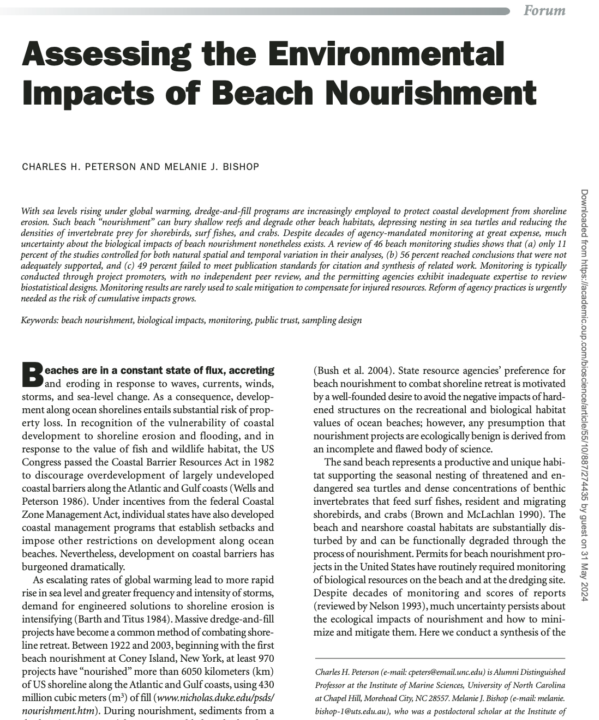Abstract or Summary

With sea levels rising under global warming, dredge-and-fill programs are increasingly employed to protect coastal development from shoreline erosion. Such beach “nourishment” can bury shallow reefs and degrade other beach habitats, depressing nesting in sea turtles and reducing the densities of invertebrate prey for shorebirds, surf fishes, and crabs. Despite decades of agency-mandated monitoring at great expense, much uncertainty about the biological impacts of beach nourishment nonetheless exists. A review of 46 beach monitoring studies shows that (a) only 11 percent of the studies controlled for both natural spatial and temporal variation in their analyses, (b) 56 percent reached conclusions that were not adequately supported, and (c) 49 percent failed to meet publication standards for citation and synthesis of related work. Monitoring is typically conducted through project promoters, with no independent peer review, and the permitting agencies exhibit inadequate expertise to review biostatistical designs. Monitoring results are rarely used to scale mitigation to compensate for injured resources. Reform of agency practices is urgently needed as the risk of cumulative impacts grows.